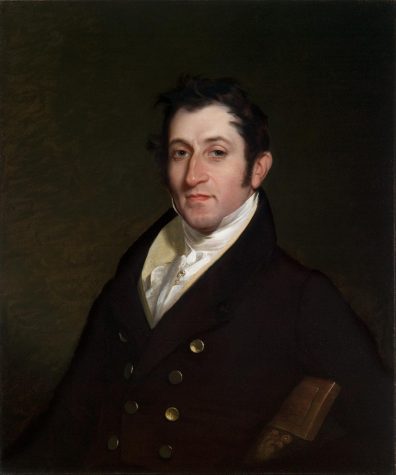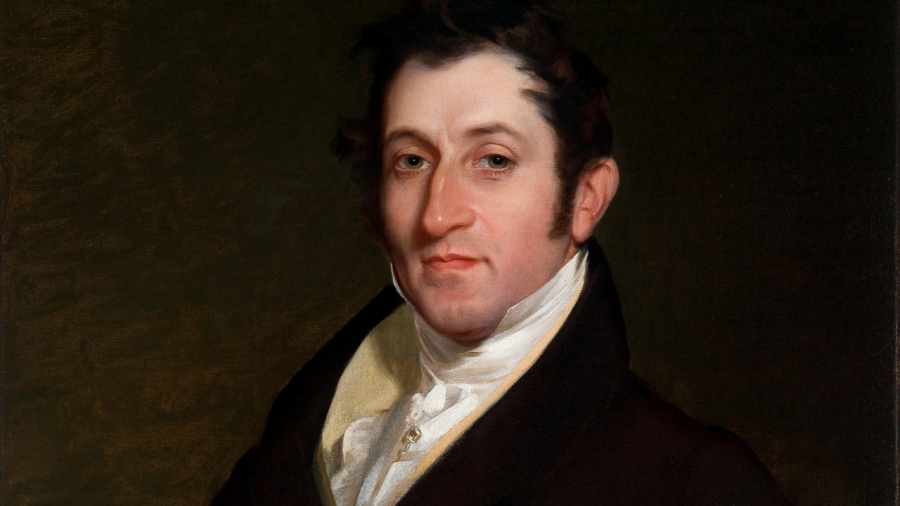Jewish art inside the St. Louis Art Museum: Col. Mendes Cohen
Published July 18, 2021
The St. Louis Art Museum attracts art lovers from around the country. But, did you know that this treasure located at the top of Art Hill in Forest Park houses a truly impressive collection of Jewish art in many forms. Jewish Art Inside the St. Louis Art Museum is a collaboration between the Jewish Light and Dale Sharon, a 25 year docent at the St. Louis Art Museum, a SLAM Board of Trustees member and an exhibited artist. Dale simply loves art, and through her passion, we hope to learn more about the amazing Jewish connection at the St. Louis Art Museum.
What is Jewish Art
Like any definition of art, the possible answers to this question are infinite, but for our purposes here in focusing on the SLAM collection, we are focusing on:
- Jewish artists.
- Jewish ceremonial art, also known as Judaica.
- Art in which the subject matter is the Hebrew Scriptures.
- Art depicting Jewish subjects.
- Judaism found in history.
- Jewish donors to the museum’s collection.
 The Story Of Colonel Mendes Cohen
The Story Of Colonel Mendes Cohen
Mendes Cohen could be the most intriguing historical figure you’ve never heard of. In fact, you could say he was half Forest Gump, half Indiana Jones and 100% a real.
ADVERTISEMENT
Colonel Mendes Cohen — who was born in Richmond, Virginia in 1796. His father was German and his mother was English, and when the family arrived in Baltimore there were only about 150 Jews in the city and no formal Jewish institutions.
During the War of 1812, he was one of a handful of Jewish American soldiers at the Battle of Baltimore in 1814, defending Fort McHenry against the British while, in a ship across the harbor, Francis Scott Key scratched out “The Star-Spangled Banner.” After the war, Cohen and his brothers entered the lottery business, selling tickets to raise funds for many public and private buildings, including Baltimore’s monument to George Washington. During this time, Cohen’s oldest brother, Jacob, was instrumental in lobbying for the so-called Jew Bill, which allowed Jews to hold office in Maryland without taking an oath to Christianity. After the lottery craze fizzled, the Cohen family entered the banking business and was so successful that Mendes was able to retire at age thirty-three.
This is where the Cohen’s story really gets interesting. Retired and rich Cohen embarked on a six-year journey through Europe and the Middle East. While on the road, he stopped in London for the coronation of William IV in June 1830 and the funeral of King George IV that August. He made it across the Channel right after the Paris student revolts had died down, and stayed to attend the coronation of Louis Philippe in September. The next year, he met with Pope Gregory in Rome, then spent several months touring the holy sites of Israel. After an extended visit to Egypt, which he spent traveling along the Nile and collecting antiquities, Cohen returned to Baltimore in 1835, only to go back to England three years later to represent Maryland at the coronation of Queen Victoria.
ADVERTISEMENT
“Our director likes to talk about him as a kind of Forrest Gump of the nineteenth century,” says Deborah Cardin, cocurator of “The A-Mazing Mendes Cohen,” an exhibit at the Jewish Museum of Maryland on display in Baltimore in 2015. “He just found himself in all these interesting places and at all these historical events.”
Cohen became the first American citizen to receive permission from the Ottomans to visit Palestine, where he recorded the hardships of the Jews of Jerusalem: “The appearance of the synagogues is that of poverty as they are not allowed to build or add to their buildings without paying a large sum to the Turks.”
He died in 1879, at age eighty-three, still regaling strangers with stories from the Battle of Baltimore.
In this Painting
In this work, we see Colonel Mendes Cohen sitting confidently, his arm thrown back over his chair to more fully direct his attention at us. His hair is fashionably swept, and the rich white, yellow, and black of his attire handsomely complements his complexion. Artist Rembrandt Peale, was one of the most sought-after portraitists of the day, painted this portrait. It hung in the Cohen family dining room from the time it was painted in 1838 until 1929, when it was purchased by the Saint Louis Art Museum.
Last month Dale Sharon began hosting a four-part series for the Mirowitz Center on Zoom that will look at Jewish Touchpoints at the St. Louis Art Museum. The zoom sessions will occur on four Mondays at 10 a.m. The series will continue on July 19, Aug. 23 and Sept. 20.
Over the course of this series, which will be offered monthly through September, participants will “brush up” on Judaica, on Jewish artists and on Biblical stories, all in the context of works from the permanent collection of the St. Louis Art Museum. The series will also “fill in the picture” with a look at Jewish donors, Jewish subjects and Jewish history, as they link to and connect with the art at SLAM. Each work that will be spotlighted is, in some way, an expression of Jewish experience, history or culture.
Register online, call 314-733-9813 or email [email protected].
Learn more about the St. Louis Art Museum.
















